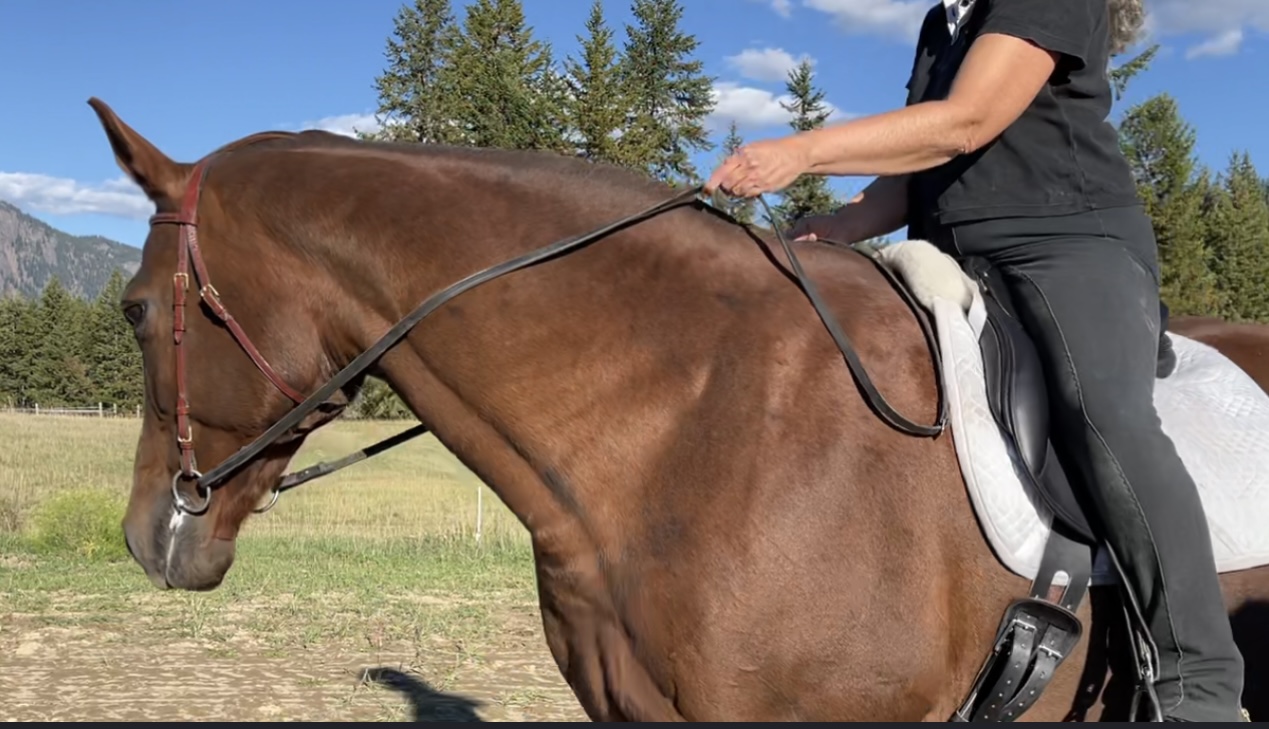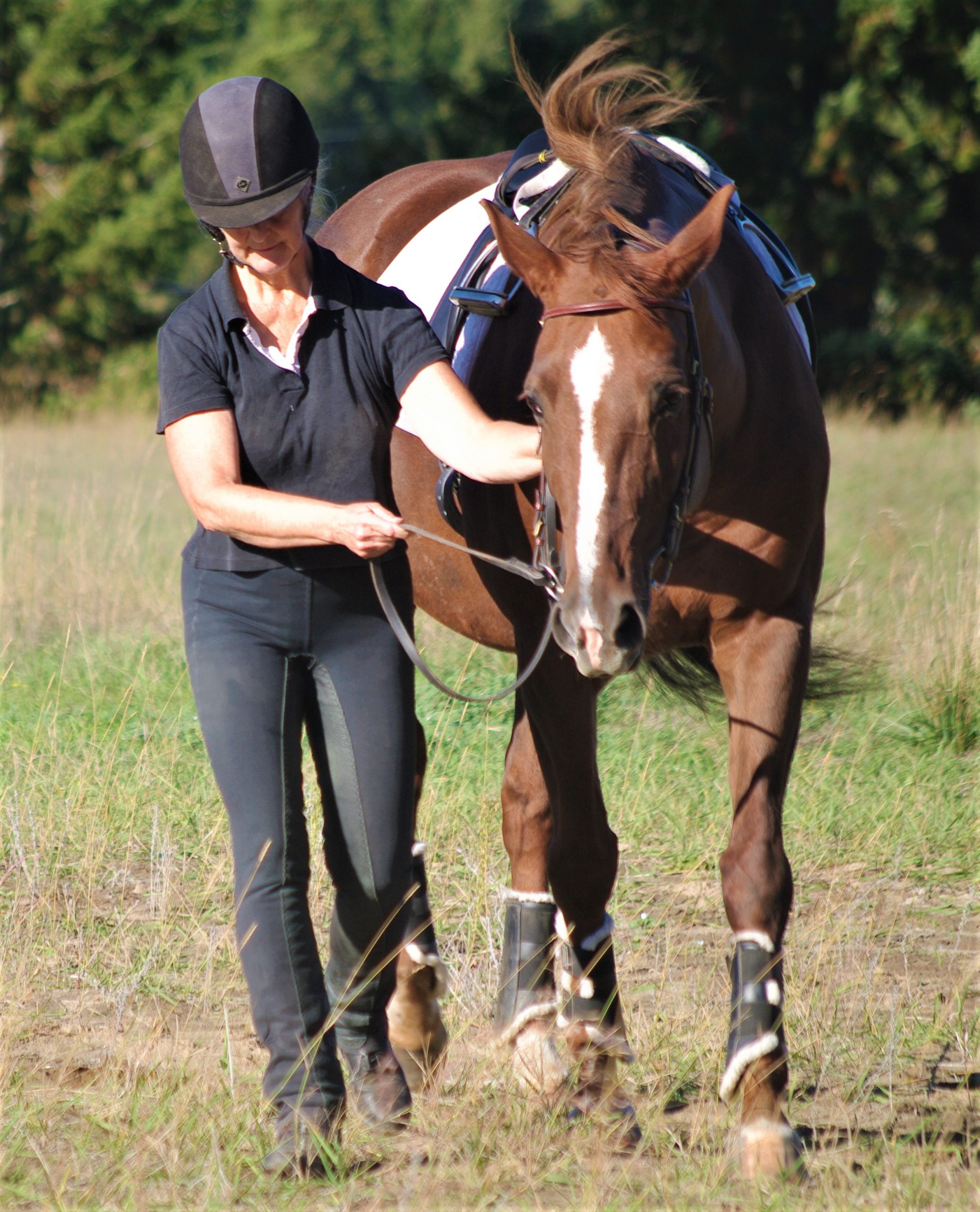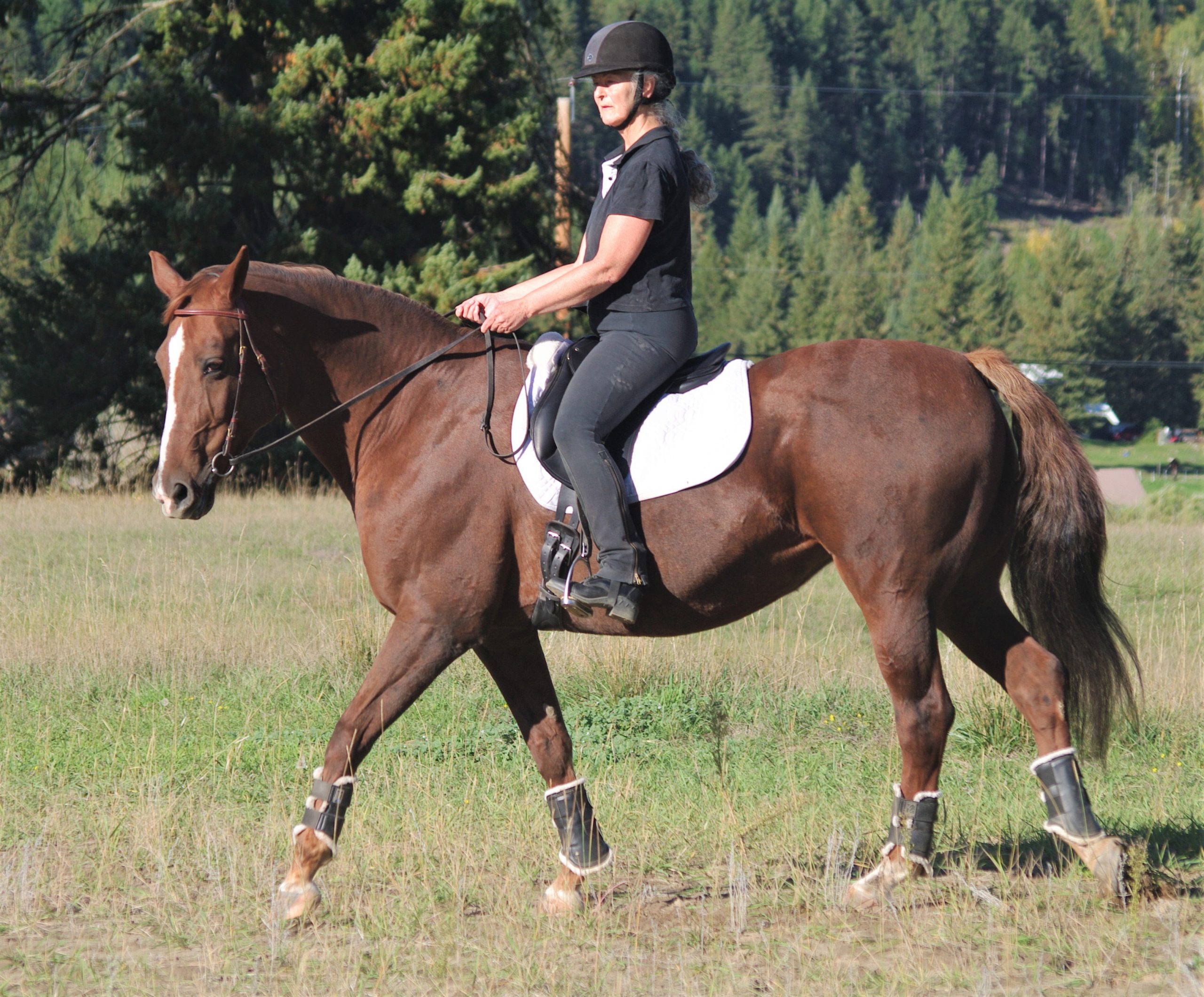Does my horse need bodywork?
A very controversial topic, lots of very different belief systems, and yet very valuable.
Many riders get caught up in the learning of bodywork and applying it.
Then the next thing that I hear or the question that I get is, "This is all taking so long, I just want to ride my horse, I'm not getting the results."
This is true and I'm going to explain to you why...
In our Harmony For the Horse Program we help you to extend beyond the horse bodywork that you are already doing with your horse to finally reaching your highest intentions with your horse.
CLICK HERE to discover more about how we can help you to reach freedom, achievement, oneness and joy that you most seek with your horse.
Bodywork can set the scene for wonderful things to happen with your horse.
But it doesn't help you with the physical training, the actual riding, or In Hand work, the conditioning, that is to follow.
A lot of riders, they will treat their horses with a certain bodywork technique, and there are lots of methods and techniques out there, anywhere from chiropractic to energy work, physical massage, there's so many different modalities and methods.
(I have done a lot of them, I have first hand experience with this, I know what I'm talking about here.)
They'll think that a certain movement pattern that they're having trouble with already with their horse is going to be resolved under saddle or In Hand, and it's not.
Horse bodywork can stimulate certain neural pathways and can benefit your horses tremendously.
But the actual habit in the movement, for you creating correct, good, pure movement in your riding, must come from you and your horse in motion.
So basically, what I'm saying is that you can use it as an adjunct to your riding, but not instead of, and exact that it's going to solve all kinds of problems.

Now once you understand the movement in your body, and therefore that understanding then can carry on to your horse's movement, you can condition those neural pathways.
So it becomes habitual for your horse and even more important than that, your horse will actually seek the comfort that the correct movement provides your horse.
When you understand correct, pure, good movement in your body, you will seek it because it feels good to you too.
The same thing happens in your horses.
Not only can you give that movement for your horse, which is giving your horse clarity, they can then follow you better, they understand you better, communication flourishes, etc.



And your bond flourishes.
But you can also notice that your horses will seek that correct pure movement because it feels good to them. So not only are you giving input, but the horse, then starts to really participate.
Now here are the some of the benefits of bodywork that I've experienced myself, with all of the different horses that I've rehabilitated on my farm...as well as the many riders and horses that I've helped, and help them to reach their goals.
1. Evaluate Blockages In Free Flowing Movement
It can help you to evaluate trouble spots or held places in your horse. And this is invaluable to be able to do that.
2. Muscle Soreness
It can help your horse with muscle soreness.
If your horse slips on the ice, for example, or is playing with another horse and makes us misstep, it can help you to help your horse in those situations.
Or if you're doing maybe a different activity that your horse isn't used to and they have sore muscles, that can certainly help there.
3. Learn Anatomy
It can help you to learn anatomy and the tissues and how everything works together.
4. Feeling In Your Hand
It can teach you about your hands and how to have a better feel.
To put your hands on your horse's back, perhaps before you ride, and to actually feel what's going on there.
You're going to be sitting on a very delicate and important part of your horse's body, your horse's spine.
5. Deeper Connection
It can help you to connect with your horse.
Whether it's energetically, whether it's hands on. or In Hand, it can help you connect and build your bond and get deeper and deeper.
6. Comfort
It can help you provide the all important comfort to your horse.
7. Diagnostic tool to help you proceed in your riding
One of the most important benefits is what we really focus on in our program is that it's a diagnostic tool to help you proceed with your riding.



If your passion is to ride your horse and to be the best possibly that you can be and reach in your highest potential, and tap into your horse's highest potential, then this is what our program does.
And this is what we help riders with.
This is what's going to help you make the difference ...
a diagnostic tool that will help you to proceed to your riding.
Here's an example is a rider that we have in our program.
She has a horse who has a hitch in the right hind leg. And this has been a long term thing. She has been through all kinds of bodywork. Any of the bodywork that's out there, you name it, she's done it, in order to try to find a solution to this problem with her horse.
This is a movement pattern, a dysfunctional movement pattern, that is causing so much grief and actually stopping her from making progress with her horse.
She was very knowledgeable about bodywork, but still not getting good results. There were some results happening, but her horse would come out always have the hitch.
And on the lunge, it was particularly noticeable.
Her horse would eventually warm up, and things would get better, but it never really disappeared, there was always something nagging and hanging in there.
What we did was bridge the gap between the bodywork that she was already doing, the Liberty work that was she was doing, her In Hand work, and helped her with her warm up ... to get very specific and very clear on how to tap into that good, pure movement that was inside of her horse.
If you'd like a copy of the warmup that we used to help this rider with her horse, put a comment below and we'll get that sent out to you.
It needs to be very specific.
We were able to help her with this hitch in her horse's right hind leg, help her to learn the horse's weaknesses, why that hitch was there and say,
"Okay, this is your horses weakness. Here's your horse dysfunctional movement pattern, why that is happening. And here's what to do about it. Here's how to warm up your horse, here's how to take your horse then and ride your horse and apply everything that you've already done and make it better. Here's a way that you can then condition those neural pathways to find the best pattern for your horse, when you're riding."
When she went through our program, find a part that she didn't know, that she couldn't see, that was actually further ahead more forward in the poll area, we helped her to find it, and then put the whole thing together and make huge results such that she was now riding her horse and working towards her dream of passage, piaffe and higher level dressage movements.
5 Keys For Success
#1 Bodywork is wonderful, but needs to be followed up with good riding



If you are getting caught up, and I see this so many times, where riders are caught up in the bodywork and jumping from one to another modality of body work, because they think that is going to be the solution to their horse's movement, then that's not going to get you where you want to go. You've got to follow it up with a good riding.
#2 Change dysfunctional movement patterns into functional movement patterns with bodywork and good riding
This is how you change dysfunctional movement patterns to functional movement patterns. Yes, use your bodywork. Yes, use it, but you need to follow up with the good riding behind it.
#3 Don't prioritize bodywork at the expense of functional movement patterns in your own body
Don't prioritize bodywork at the expense of learning functional movement patterns in your own body which then leads to functional movement patterns in your horse's body, and this is a good pure movement.
#4 Hiding behind bodywork and self-sabotaging their riding
And one other thing I see a lot is people actually hiding behind the bodywork using that as an excuse, a reason to self sabotage themselves, and not actually ride.
"Oh, I'm just gonna do body work for my horse"
It's very satisfying. I know I've done it myself. Your horse relaxes, you get in tune with your horse. You get lots of licking and chewing and releases, and it feels wonderful.
But if you don't follow that up with good riding, then that's not going to help you to develop true functional movement patterns.
And if you're hiding behind that, and not riding, I'm going to call you out on that. And this is what we do in our program, we will call you out on it, we will make sure that you reach your goals that you want to reach.
#5 Taking too long...
Time with your horse is slipping away
Tragedies may happen. Things happen with horses, things happen to us. We do not know what is in the future.
We are dealing with living, breathing, sentient beings that can succumb to any number of tragedies.
Time is slipping away. Do not waste the time. Do not waste another minute. Your horse deserves that you deserve it.
We can help you realize your true strengths and realize your true potential along with your horse. And put all these things together for you bridge the gap of the bodywork that you may be doing with your horse but not quite getting there all the time.
If you want support in this way, to reach your, and your horse's highest potential, then...
CLICK HERE to schedule a call with us!
MORE RESOURCES TO HELP YOU BUILD YOUR DREAM HORSE

